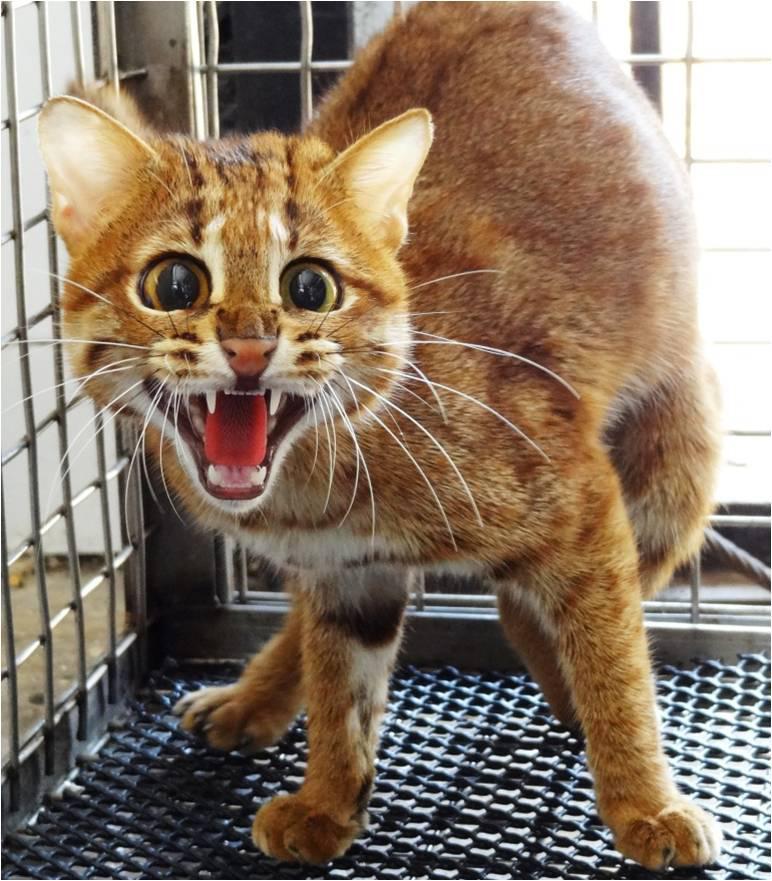Murthy Kantimahanti
Other projects
12 Nov 2024
Community Camera Trapping for Monitoring Rusty-Spotted Cats on Village Lands in the Eastern Ghats of South India
The project aims to establish the presence of natural populations of the rusty-spotted cat Prionailurus rubiginosus in the Eastern Ghats region of Andhra Pradesh with an assessment of habitat suitability, anthropogenic threats and potential for its conservation along with creating awareness among all stakeholder groups.

A rusty-spotted cat that was rescued by local zoo officials.
The Rusty-spotted cat (Prionailurus rubiginosus) is included under Schedule-I of Indian Wildlife Act, 1972 and also categorized as "Near Threatened" in the IUCN Red List.
The Eastern Ghats hill ranges in south India comprise vast stretches of dry deciduous forests providing a potential habitat for the rusty-spotted cat to inhabit. Some of the recent records of road kills and incidental captures of rusty-spotted cats coupled with indiscriminate development in unprotected areas across the northern Eastern Ghats region of Andhra Pradesh beckon for conservation attention. The project envisages developing a holistic understanding of the bio-geographical distribution of rusty-spotted cats and the implications of the proposed developmental activities on their native habitat through GIS-based habitat modelling, camera trapping, sign surveys, interviews and assessment of potential threats in the region. It also involves promoting awareness via various communication channels among all stakeholders to foster support for conservation of a rare cat species in a largely neglected landscape.
We will train local people in track and sign surveys and involved them in setting up motion-sensor wildlife cameras in locations with confirmed indirect evidence. The relevant observations and associated GPS locations of tracks, scats and photographs of rusty-spotted cats will be recorded. Additionally, we will also document evidence-based identification of live and dead animals, news reports, and anecdotal information such as direct and indirect observations and comments made by local people through questionnaire based surveys. An assessment of various human-induced threats to the survival of the species will also be made and site-specific mitigation measures will be devised for recommendation to wildlife authorities.
Our previous observations show that there is a lack of awareness among local villagers about wildlife in their environs. We will organize frequent education programs to promote awareness about the importance of conserving this lesser known, rare cat species and how natural habitats directly/indirectly benefit mankind in order to encourage local communities to participate in community-based conservation efforts.